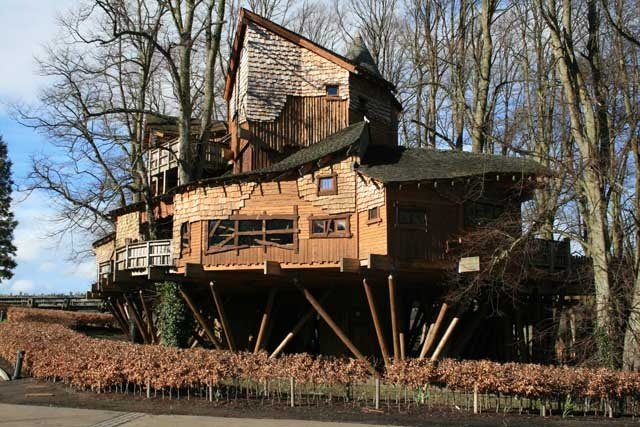If you were fortunate enough to grow up in a home with a decent-sized yard with plenty of trees, then you might know the joys of having your own little house built amongst the branches. As a kid, there’s little that beats a retreat so close to home where you can do anything you want, and play pretend-games all day (away from all the grown-ups!). Now, as a loving adult and parent, you may feel compelled to construct a treehouse for your own children.
Admittedly, this is not the easiest household task, so you may wish to hire a local handyman in London or New York or Melbourne (or wherever you and your family happen to live). However, if you’re up for the challenge, here are some basic safety tips for building a treehouse your kids (and your kids’ friends) will love — and never fall out of.

Tip one: picking your tree.
Not just any will do. Your tree has to be sturdy and strong, not too old or young, with deep roots and no evidence of disease. There should be a Y-shape in the sturdiest branches that serve as your base, so you have four anchor points instead of two. This is crucial — I don’t need to tell you what could go wrong, should you build a house on weakened foundations. If you’re unsure whether any of the trees in your backyard fit the bill, consider consulting an arborist in your area.
It’s also worth noting that there may be relevant restrictions on your DIY project (height limitations, for example), and a permit may be required. Clear your intentions with your local urban planner before breaking out the hammer and nails. While you’re at it, talk to your neighbours and insurance agent (if applicable), to make sure there are no objections. You don’t want to hear complaints once the house has already been erected.
Tip two: deciding on a design.
You’ve selected the ideal tree — great. Now, you need to figure out how to incorporate its unique shape with your structure. There are a few things to consider: size, tree growth, support, susceptibility to the elements, access, and clearing the space. For a standard treehouse (eight feet by eight feet), the tree trunk should be at least 12 inches in diameter. Ensure there is enough room around the base to allow for an expanding trunk and branches. Bearing in mind that trees move with the breeze, it’s essential to fit your treehouse with sliding brackets and other adjustable parts.
There are three kinds of support: post (sinking support posts around the base of the tree, and attaching nothing to the tree itself), bolt (attaching beams and the platform directly to the tree — the most traditional method, but damaging, and will make your platform susceptible to cracking), and suspension (hanging the treehouse from strong upper branches using chains or cables — not ideal for carrying overly heavy weight). There are also multiple methods for treehouse access: standard (purchasable from hardware stores) or rope ladders, and staircases. (Nailing planks of wood to the trunk for steps isn’t safe or sturdy).
Finally, question how you’ll incorporate the branches with your design. Will you remove the excess, or build around them? All the above questions are essential to figure out before you begin constructing. Consider making a mini-model of your design so that you can detect any potential problems early on. Possible designs can also be found online.
Tip three: additional safety features.
The biggest hazard for your children is falling out of your treehouse. Don’t build too high — the platform should be no more than six to eight feet from the ground. Make sure there are railings all the way around the edge, and there aren’t significant gaps in the slats. Pad the surrounding earth with soft material, like wood chips, mulch, or leaves. Finally, weatherproof your wood by staining or painting it, and sand away the surfaces so your kids won’t pick up any nasty splinters.
Last but not least — enjoy showing your children what you’ve made for them! (And don’t forget to test it out yourself, first. You’re allowed some childish fun after all your hard work).